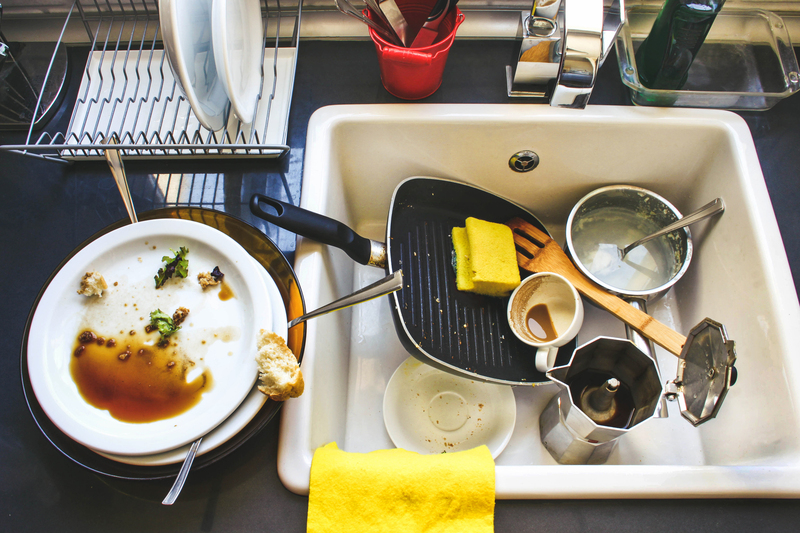The Essentials of Piano Moving and Why You Need a Professional
Posted on 19/06/2025
The Essentials of Piano Moving and Why You Need a Professional
Moving a piano is not a task for the faint-hearted. These majestic instruments are not only heavy, but they're also delicate, intricate, and valuable. Whether you're relocating across town or simply moving your piano to a different room in your home, understanding the essentials of piano moving--and knowing why you need a professional for the job--can protect your treasured instrument and ensure a smooth transition. In this comprehensive guide, we'll explore everything you need to know about professional piano moving services.

Why Moving a Piano is Unique
Unlike moving a couch or a fridge, piano moving involves unique challenges that shouldn't be underestimated. Pianos are composed of thousands of moving parts, sensitive keys, delicate strings, and intricate internal mechanisms. The weight of a standard upright piano can range between 300 and 500 pounds, while grand pianos can exceed 1,000 pounds! The combination of size, weight, and fragility makes amateur piano moving a major risk for both the instrument and the movers themselves.
Main Challenges in Piano Transportation
- Large Dimensions: Even small uprights are awkward to maneuver around corners, doorways, and staircases.
- Significant Weight: Manoeuvring hundreds of pounds without the right equipment can cause injuries.
- Delicate Components: Any jolt or bump could throw sensitive parts out of alignment or lead to costly damage.
- Potential for Damage: Floor scratches, wall chips, and damage to the piano's lacquer or legs are common during inexperienced moves.
For these reasons, the importance of using professional piano movers cannot be overstated. These specialists not only protect your instrument but also your home and everyone involved in the process.
What Makes Professional Piano Movers the Best Choice?
When it comes to moving a piano, expertise goes a long way. Here are some critical reasons why hiring a professional piano moving service is a smart investment:
- Expertise and Training: Professional piano movers are trained specifically in handling all types of pianos, ensuring the safest possible procedures.
- Specialized Equipment: From piano dollies to heavy-duty straps and custom padding, movers use high-grade tools needed for the job.
- Insurance and Liability: Trusted firms are insured, meaning your instrument is protected from unforeseen events or damages during the move.
- Efficient Planning: Pros will assess the move location, plot the safest route, and plan for any special challenges such as stairways, narrow halls, or elevators.
- Time and Stress Savings: Leave the heavy lifting and logistics to the experts, and focus on enjoying your beautiful piano in its new home.
The Difference Experience Makes
Professional piano moving companies often have years--if not generations--of experience. This expertise is invaluable, not just in moving the instrument but also in handling unexpected obstacles, unique architectural layouts, or unforeseen complications during transport. Their knowledge helps ensure damage-free relocation for even the most precious grand, baby grand, or upright pianos.
The Step-by-Step Process of Professional Piano Moving
Understanding the detailed procedure employed by experienced piano movers can offer peace of mind and demonstrate why their services are essential for your prized instrument. Here is a step-by-step overview of what a professional piano move typically involves:
1. Comprehensive Assessment and Planning
The moving team will evaluate your piano, room layouts, access points, and possible obstructions. This planning phase helps eliminate surprises and prepares the team for smooth handling.
2. Securing the Piano
Piano movers will lock the keyboard lid and cover all vulnerable parts using thick blankets, paddings, and securing straps. If necessary, removable parts such as legs, pedals, or music stands are carefully detached and wrapped for extra safety.
3. Employing Specialized Equipment
Movers use heavy-duty piano dollies, lifting straps, skid boards, and ramps designed exclusively for safe piano transport. These tools minimize physical strain and reduce the risk of damage.
4. Careful Maneuvering
With precise coordination, professionals move the piano through tight spaces, up or down stairs, and onto the moving vehicle. Every step is controlled, calculated, and frequently double-checked for safety.
5. Transport and Reinstallation
During transit, the piano is immobilized within the truck to prevent jostling or vibration damage. Upon arrival at the destination, the team reverses the process--reassembling and positioning the instrument exactly as desired.
Types of Pianos and Their Moving Requirements
There are several types of pianos, each with its own unique challenges for moving. Let's look at the most common:
- Upright Pianos: Easier to navigate through doorways but still surprisingly heavy and awkward. Balanced lifting and adequate padding are essential.
- Baby Grand Pianos: Legs and pedals often require careful removal. The curved body demands particular attention to avoid scratches.
- Concert Grand Pianos: Monstrous in size and weight; often needing a team of specialized movers, custom crating, and occasionally, crane services for moving in/out of upper stories.
- Electric and Digital Pianos: Lighter but often contain sensitive electronics that must be protected against shocks and temperature changes.
No matter the type, safe piano moving means adapting techniques and tools for the specific model and situation.
Common Risks of DIY Piano Moves
It may be tempting to gather a few strong friends and attempt a DIY piano move, but the risks can be enormous. Here are just a few potential hazards:
- Personal Injury: Due to weight and size, improper lifting technique can lead to serious injuries such as muscle strains, back damage, or crushed fingers and toes.
- Instrument Damage: Even a small mistake can result in snapped strings, broken keys, damaged pedals, or loosened internal parts--often requiring expensive repairs.
- Home Damage: Floors, walls, and even door frames can suffer scrapes, dents, or breaks if the piano slips or is awkwardly maneuvered.
- Lack of Insurance: With no professional coverage, you bear the full financial responsibility for any accidents or damages.
Ultimately, trying to save on professional piano moving costs could result in far greater expenses and regret down the line.
How to Choose the Right Piano Moving Company
Finding the best team for your piano relocation is crucial. Consider these factors when selecting a professional piano moving service:
- Specialization: Confirm that the company regularly moves pianos--not just general furniture.
- Experience: Years (or decades) in business often reflects quality and reliability.
- Reviews and References: Read customer reviews, ask friends or family for recommendations, and request references from the company.
- Insurance and Credentials: Make sure the movers are licensed and fully insured for both injury and property damage.
- Detailed Quotes: Transparent pricing is critical; beware of hidden fees or vague estimates.
For added peace of mind, speak directly with the team, ask questions about their technique, and ensure you feel comfortable entrusting them with your cherished piano.
Preparing Your Piano for the Move
Even when working with professionals, a few simple preparations on your end can make the process even smoother:
- Clear Pathways: Remove obstacles or clutter between the piano and exit route.
- Communicate Details: Inform the movers of any special concerns, narrow doorways, or fragile flooring areas.
- Secure Accessories: Remove sheet music, lamps, or decorative items from the piano.
- Plan for Tuning: Expect to have your piano tuned after the move, as jostling and environmental changes can affect pitch.
A little preparation ensures your piano moving experts can do their best work and that your instrument arrives safely in its new space.
Post-Move Piano Care
Once your piano is in its new location, a few steps will help it adjust:
- Let It Acclimate: Give the piano time to adjust to the temperature and humidity of its new environment before playing or tuning.
- Schedule Tuning: Professional tuning a few weeks after the move will restore sound quality.
- Regular Maintenance: Continue with routine cleaning, inspections, and servicing to keep your piano in top condition.

Frequently Asked Questions about Piano Moving
How much does professional piano moving cost?
Piano moving costs vary based on size, distance, stairs, and additional requirements. Upright piano moves can start at $150-$300 regionally, while grand pianos or long-distance moves can exceed $500 or more. Request detailed quotes from trusted piano movers for accuracy.
Are all movers qualified for piano moving?
No. Many general movers lack the specialized training and equipment required for safe piano relocation. Hire teams that explicitly advertise piano moving expertise.
Can I keep my piano in storage?
Yes, but choose climate-controlled storage to protect against humidity and temperature changes that can warp wood, felt, and strings.
Conclusion: Protect Your Investment with Professional Piano Movers
Pianos are more than just musical instruments--they're family heirlooms, significant financial investments, and sources of lifelong enjoyment. The essentials of piano moving involve a unique blend of strength, skill, planning, and specialized tools. By entrusting your move to a professional piano moving company, you safeguard your instrument, your property, and your own wellbeing. Don't leave something so precious to chance--choose the pros, and let your piano's music continue to enrich your life for decades to come.
Thinking about moving a piano? Contact your local professional piano movers today for a quote and experience a smooth, worry-free relocation.





